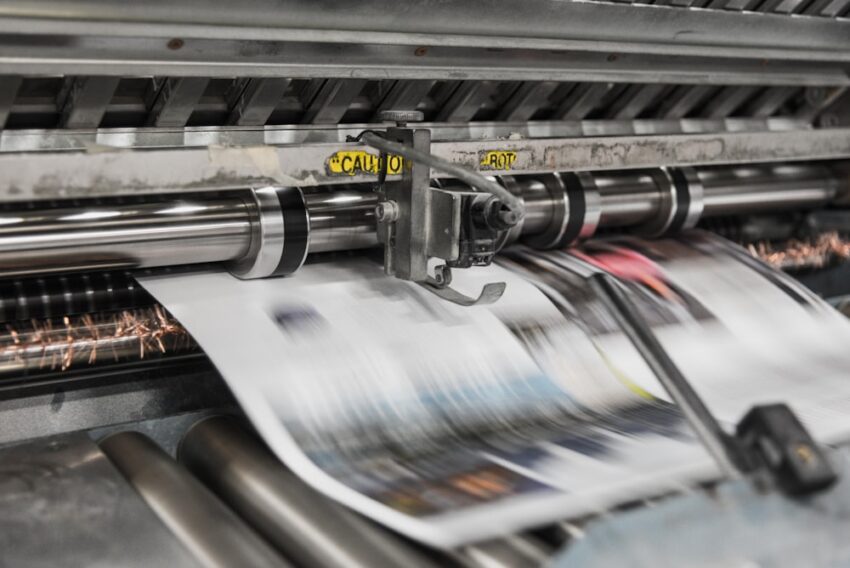In today’s dynamic business landscape, effective management of print resources plays a crucial role in boosting productivity and curbing unnecessary expenditures. Regardless of their scale, businesses across diverse sectors heavily rely on various printing necessities, spanning from promotional materials to internal paperwork.
However, handling these printing needs internally often leads to inefficiencies and inflated costs. This is where the intervention of professional printing services from the likes of https://www.flewwellingpress.com/ and print management solutions becomes pivotal, offering streamlined workflows and economical alternatives for businesses of all sizes.
Understanding Print Management
Print management encompasses an array of services and solutions designed to optimize a company’s printing infrastructure and procedures. It entails strategic planning, vigilant monitoring, and meticulous control of print resources to attain specific objectives, such as cost reduction, heightened efficiency, and bolstered security.
Whether it pertains to overseeing print queues, optimizing device utilization, or instituting print policies, proficient print management can deliver substantial advantages to organizations.
The Challenges of In-House Printing
Managing printing needs in-house can pose several challenges for businesses:
- High Overhead Costs – Maintaining printing equipment, purchasing consumables, and hiring dedicated staff can result in significant overhead costs.
- Workflow Inefficiencies – Inefficient print workflows can lead to delays, errors, and wasted resources, hampering overall productivity.
- Security Risks – Inadequate print security measures can expose sensitive information to unauthorized access or breaches, posing serious risks to data privacy and compliance.
- Lack of Scalability – As businesses grow, their printing needs evolve, requiring scalable solutions to accommodate changing requirements.
Benefits of Professional Printing Services
Outsourcing print management to professional printing services providers offers several advantages:
- Cost Savings – By leveraging the expertise and resources of a professional printing company, businesses can reduce overhead costs associated with in-house printing operations.
- Efficiency and Productivity – Professional printing services streamline workflows, ensuring faster turnaround times and improved productivity.
- Quality and Consistency – With access to advanced printing technologies and high-quality materials, professional printers deliver superior results consistently.
- Scalability and Flexibility – Professional printing services can scale according to business needs, accommodating fluctuations in demand without compromising quality or efficiency.
- Enhanced Security – Professional printers implement robust security measures to protect sensitive information and ensure compliance with data protection regulations.
- Environmental Sustainability – Many professional printing services prioritize eco-friendly practices, offering sustainable printing solutions that minimize environmental impact.
Key Considerations When Choosing a Printing Partner
When selecting a printing partner for print management services, businesses should consider the following factors:
Reputation and Experience – Choose a reputable printing company with extensive experience in providing print management solutions.
Technological Capabilities – Assess the printing technologies and capabilities offered by the provider, ensuring they can meet your specific requirements.
Quality Assurance – Look for certifications and quality assurance processes to ensure consistent, high-quality results.
Customer Support – Evaluate the level of customer support and responsiveness offered by the printing company, especially in case of urgent requirements or technical issues.
Cost-Effectiveness – Compare pricing structures and service packages to ensure cost-effectiveness and transparency.
Security Measures – Inquire about the security protocols and measures implemented by the printing provider to safeguard confidential information.
Environmental Commitment – Consider the provider’s commitment to sustainability and environmentally friendly practices.
Implementing Print Management Strategies
To effectively implement print management strategies within your organization, follow these steps:
Assess Current Printing Infrastructure – Conduct a thorough assessment of your existing printing infrastructure, including devices, workflows, and resource utilization.
Identify Pain Points and Opportunities – Identify areas of inefficiency, excessive costs, or security vulnerabilities within your print environment. Look for opportunities to streamline processes and optimize resources.
Set Objectives and Goals – Define clear objectives and goals for your print management strategy, such as cost reduction targets, efficiency improvements, or enhanced security measures.
Select a Printing Partner – Based on your requirements and criteria, choose a printing partner that aligns with your objectives and can meet your specific needs.
Implement Solutions and Policies – Work with your printing partner to implement tailored solutions and print policies designed to achieve your objectives while ensuring compliance and security.
Monitor and Evaluate Performance – Continuously monitor the performance of your print management strategy, tracking key metrics such as cost savings, productivity improvements, and security compliance.
Adjust and Refine as Needed – Based on feedback and performance metrics, adjust your print management approach as needed to optimize results and address emerging challenges.
Conclusion
Whether you’re a small startup or a large enterprise, investing in print management can yield tangible returns in terms of cost savings, productivity gains, and operational efficiency. By prioritizing print management as part of your overall business strategy, you can stay ahead of the competition and drive sustainable growth in today’s dynamic marketplace.


